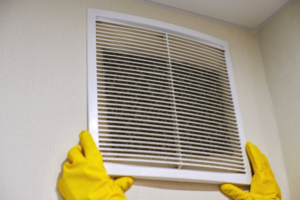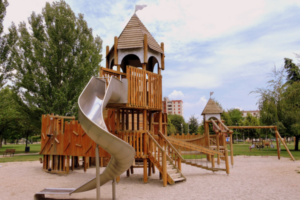Shared living spaces are becoming more common across cities as young professionals, students, and remote workers look for community-centric alternatives to traditional housing. With affordability and sociability top of mind, co-living offers a mix of private areas and shared common spaces like kitchens, bathrooms, and lounges. While co-living has its perks, managing cleanliness and indoor air quality can get complicated fast — especially when it comes to mold.
Mold doesn’t care how friendly your roommates are or how cute the kitchen backsplash looks. It thrives on excess moisture and neglect. In shared living spaces, even a small leak or damp corner can cause big issues if no one takes quick ownership. Mold can grow in just a few days and lead to lung irritation, allergies, or worse. And that’s not even touching on the cost of remediation and damage control.
This article is for anyone living in, managing, or thinking about joining a co-living community. Let’s talk about what makes mold such a concern in these shared environments, what helps prevent it, and how everyone — from landlords to tenants — can do their part to keep spaces clean, dry, and safe.
Why Mold is a Bigger Threat in Co-living Spaces
When multiple people are sharing bathrooms, kitchens, laundry rooms, and other damp areas, the risk of mold growth increases. That’s because more people means more humidity, more chances for spills, and more foot traffic bringing in moisture from outside. Add in the occasional communication hiccup, and the odds of someone noticing early signs of mold before it becomes a problem can plummet.
Mold spores are always in the air, but they need moisture to grow. In co-living spaces, common triggers include leaky pipes, wet towels left on the floor, poor ventilation, and forgotten food in shared fridges. Unless everyone is on the same page, mold prevention becomes another chore nobody wants to bring up — until it’s too late.
Shared Responsibility in Mold Prevention
This isn’t a one-person job. Everyone using a shared space has some level of responsibility when it comes to keeping mold from becoming a problem. Landlords and property managers are responsible for structural elements, plumbing, and ensuring that ventilation systems work properly. Meanwhile, residents should be cleaning up after themselves, reporting issues quickly, and cooperating with each other.
The key right here is communication. It helps to have clear agreements upfront about cleaning schedules, maintenance requests, and regular walkthroughs. If someone notices condensation forming on windows every morning or smells something musty near the sink, that info needs to be shared fast. Ignoring the problem doesn’t make it go away — it makes it worse for everyone.
Moisture Management: The Secret to Mold Prevention
If you want to stop mold in its tracks, controlling indoor moisture is your best weapon. In co-living spaces, this takes teamwork. Kitchens and bathrooms are usually ground zero for water build-up, so being mindful of how these areas are used is huge.
Ventilation should be a top priority. Fans need to be working and used consistently, especially during and after showers. Cooking without turning on the range hood, or letting pots of water boil endlessly, adds humidity that clings to ceilings and windows — perfect mold conditions. Even leaving the bathroom door open after a steamy shower can make a difference.
In shared kitchens, it’s all about cleaning as you go. Unwashed dishes in the sink or spills on counters might seem minor, but they create damp environments where mold can cling to wood trim and tile grout. Wipe surfaces, mop up spills, and don’t let trash bins overflow. Even something as simple as keeping the kitchen sponge dry overnight helps reduce the mold risk.
Who Fixes What: Landlord Versus Tenant Duties
This is a frequent source of tension in co-living spaces. A busted water heater or a leaky roof? That’s on the landlord. But mold inside the shower from weeks of soap scum and neglect? That’s squarely in resident territory. Understanding the difference can help avoid conflict and get problems resolved faster.
Landlords need to stay on top of the structure. That means fixing leaks with urgency, maintaining HVAC systems, and checking for signs of moisture infiltration. Preventive maintenance inspections every few months can catch issues before they grow. Meanwhile, tenants should keep their own rooms clean and dry, report plumbing concerns quickly, and contribute responsibly to common space upkeep.
Good co-living agreements break down these responsibilities clearly right from the start. Repairs should be reported through proper channels, and both parties should document with photos if mold does appear. That avoids the blame game and saves time when it’s time to act.
Early Warning Signs That Mold is Taking Hold
The worst mold issues are the ones that go unnoticed until the damage is obvious. Spotting the early signs helps stop them before they turn ugly. Watch for peeling wallpaper, discoloration on walls or ceilings, or a strong moldy odor coming from corners, closets, or underneath sinks. These clues often appear before mold becomes visible.
Sometimes it shows up as little black or brown spots. In bathrooms, check grout lines in the tile. In kitchens, check under the sink where humidity builds. Around windows, watch for moisture pooling on the sill. If something looks suspicious or smells off, assume it could be mold and address it quickly.
Shared space safety is about catching problems before they spiral. If one person ignores something small, assuming someone else will handle it, spores get to spread. Mold is sneaky, but not unbeatable if folks stay alert and act fast.
Tips and Habits That Keep Mold Away
You don’t need to bring in a dehumidifier army. Small actions, done consistently, can keep co-living mold prevention simple and effective. Cracking a window, running exhaust fans, and drying wet towels after showers means a lot. Avoid air-drying clothes indoors if possible since it adds to indoor moisture.
Clearing the lint trap on the dryer helps airflow. Cleaning refrigerator drip trays and wiping down condensation-prone surfaces avoids growth in dark hidden places. Regular cleaning routines make it easier to spot small changes that might mean mold is starting to appear.
For landlords, using mold-resistant paint in bathrooms and kitchens adds another level of defense. Sealing grout and keeping caulking in good shape around tubs and sinks also keeps moisture from creeping behind surfaces. Scheduling seasonal inspections or professional checks after heavy rains can prevent surprises.
What To Do If Mold is Discovered
If you spot mold in your living space, the first step is not to panic. You’ll want to determine how serious it is and figure out the cause. Surface mold on tile can often be cleaned with common household products, but deeper infestations in drywall or insulation often need to be professionally removed.
Taking photos and reporting the issue to the landlord is essential. If the mold is causing allergies, asthma flare ups, or making you sick, it may need immediate attention from a certified remediation company. The longer it sits, the more damage it can do to the structure and your health.
Only trained professionals should disturb large areas of mold growth. Scrubbing hidden mold without understanding the contamination path can release more spores into the air. Never paint over mold thinking it solves the problem — that only makes it worse underneath.
Communication Is the Glue That Holds Mold Prevention Together
In shared housing situations, people come from different backgrounds and have different expectations about cleanliness. Some may clean daily, others weekly, and some might not notice a step-by-step mildew invasion until it’s too late. That’s why good communication is critical.
Having low-pressure group chats about shared responsibilities can go a long way. Setting cleaning expectations, rotating tasks, and holding each other accountable keeps mold from becoming the elephant in the room. When everyone understands what mold is, what causes it, and how to reduce it, you’re on the same team.
Even small agreements — like leaving the shower curtain open to dry or running the fan when cooking — help protect everyone’s health. When renters and landlords are proactive and responsive, mold issues rarely have a chance to settle in.
Summary
Mold in co-living spaces is a shared problem, but it’s also easily avoidable. The most effective strategy is being aware, maintaining good habits, and fostering open communication between all parties. Moisture management is at the foundation of good shared space safety practices. When everyone involved plays their part — from taking shorter showers to reporting plumbing concerns — co-living mold prevention becomes part of the everyday routine rather than a costly emergency.
Whether you’re renting a big house with friends or running multiple units as a landlord, keeping mold out is totally doable. Watch for warning signs, stay on top of ventilation, and most importantly, talk about the issue before it’s one. A healthy home starts with a dry one. That’s a mold-free mindset worth sharing.







